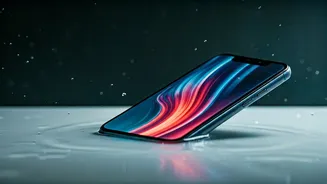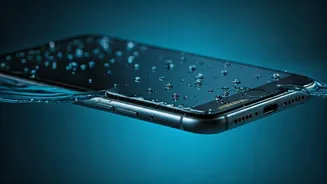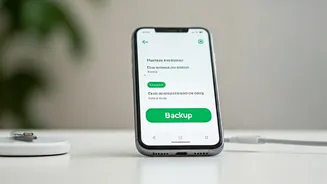Immediate Actions Required
The first moments after a phone plunges into water are critical. Remove the phone from the water immediately. Every second the phone is submerged, the risk
of damage increases. Turn off the phone if it is still on. This action cuts off the power supply, which prevents short circuits and other possible damage. Take off any removable parts like the SIM card, microSD card, and the phone case. These steps should be taken as quickly as possible to prevent further damage to the phone's internal components.
Gentle Exterior Cleaning
After removing the phone from the water and removing any removable parts, the next step involves gentle cleaning. Carefully wipe the phone's exterior using a soft, absorbent cloth. Pay special attention to ports, openings, and crevices where water may have entered. Avoid using harsh chemicals or abrasive materials, as these can further damage the phone. Make sure to wipe down all external parts to remove any residual water and debris that might be clinging to the phone.
The Drying Process
Once the phone's exterior has been cleaned, drying is the next stage in the recovery process. The most effective method is to use a desiccant, and one of the most popular choices is uncooked rice. Place the phone and its removable parts in a container or a sealed bag filled with rice. The rice will absorb the moisture from the phone. Ensure the phone is completely submerged in the rice. Other desiccants, such as silica gel packets, can also be used. This process generally takes between 48 to 72 hours, which is when the phone should be removed and tested.
Testing the Device
Once the drying process is complete, it's time to test the phone. Remove the phone from the drying agent and reassemble any removed components, such as the SIM card and microSD card. Attempt to power on the phone. If the phone turns on, check all functions, including the screen, speakers, microphone, and charging port, to ensure everything is working correctly. If the phone does not turn on, try charging it for a short period. If the phone remains unresponsive, move on to the next step, which involves seeking professional help.
When To Seek Help
If the phone does not power on, or if some functions do not work correctly, then the next step is to seek professional help. Take the phone to a qualified phone repair shop. A professional can examine the phone more thoroughly. They can identify the specific issues caused by water damage and offer advanced repair services, such as component replacement or cleaning. Do not attempt to open the phone yourself if you are not experienced, as this can cause further damage. A professional assessment is the best course of action at this point.
Preventative Measures
Preventing water damage is better than trying to fix it. Consider using a waterproof phone case. These cases create a barrier against water and can protect the phone. Always be mindful of the phone's environment, particularly near water sources. Avoid using the phone in the rain, near pools, or in the bathroom. Also, be careful when taking the phone to places where water exposure is likely. Taking these precautions can significantly reduce the risk of water damage and help protect your phone.












